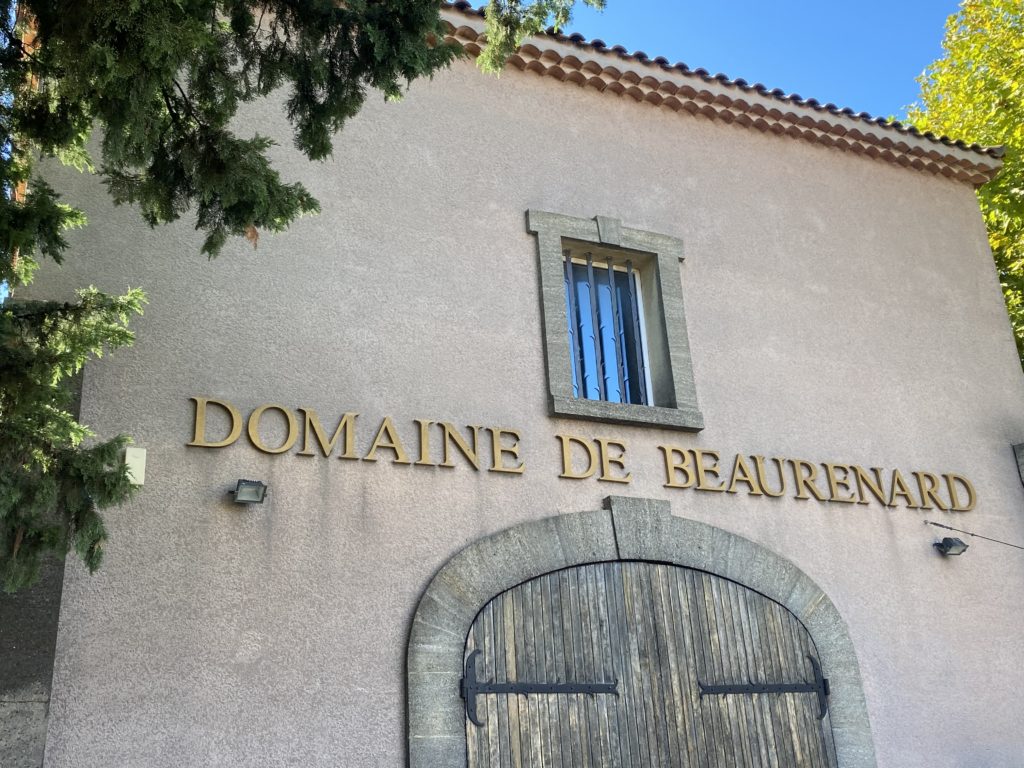
Domaine de Beaurenard, Chateauneuf-du-Pape, Sept. 2023 (Photo P. Hunt)
By Patrick Hunt –
Regardless how many times I’ve had a wine degustation in Chateauneuf-du-Pape over three decades, it never fails to excite when driving over the regional road D-68 from the north into the vineyards and then finally see the old chateau looming over town. You know you are fairly close when you glimpse the rolling vineyards with their famous galets roulés, the near-endless rounded rocks under the vines that make up a considerable surface of the terroir as they reflect sunny heat back from the earth into the rows.
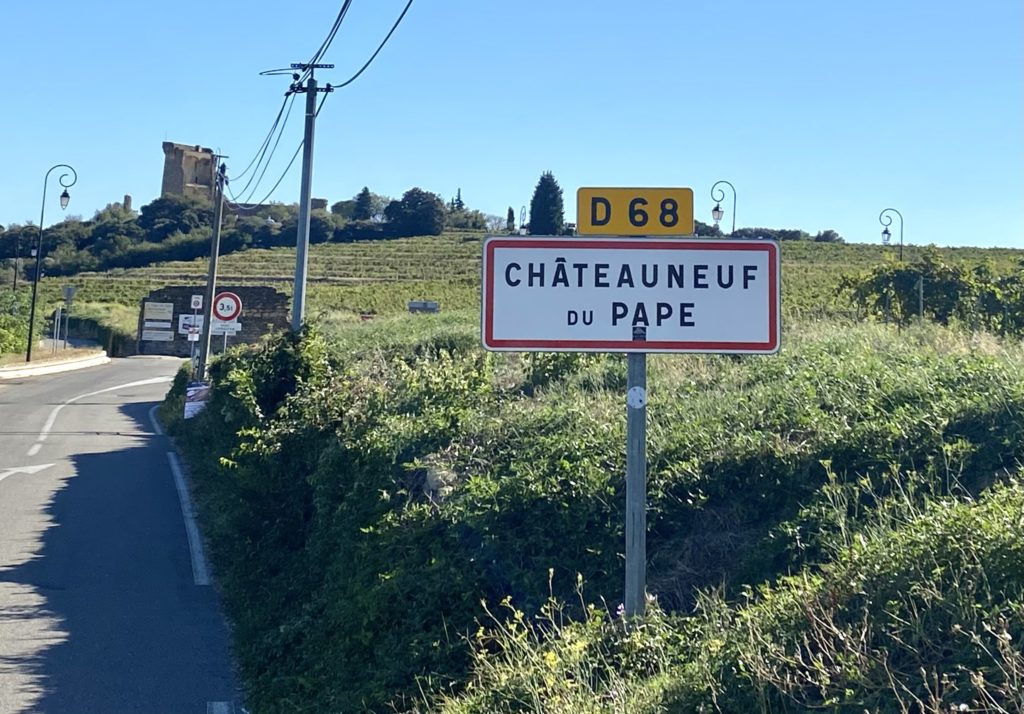
Driving into Chateauneuf-du-Pape on the D-68 (Photo P. Hunt, 2023)
For the last several years in early fall, I’ve been lucky enough to have a degustation appointment at Domaine de Beaurenard, one of the best Chateauneuf-du-Pape producers with around 80 acres (32 hectares) spread around the appellation and other parcels with 62 hectares to the northeast in Rasteau. The highly-reputed domaine rated enough clout to appear on Wine Spectator‘s Southern Rhine edition cover in November 2018 with accompanying article where the 2016 red was also rated 96 points in the magazine.
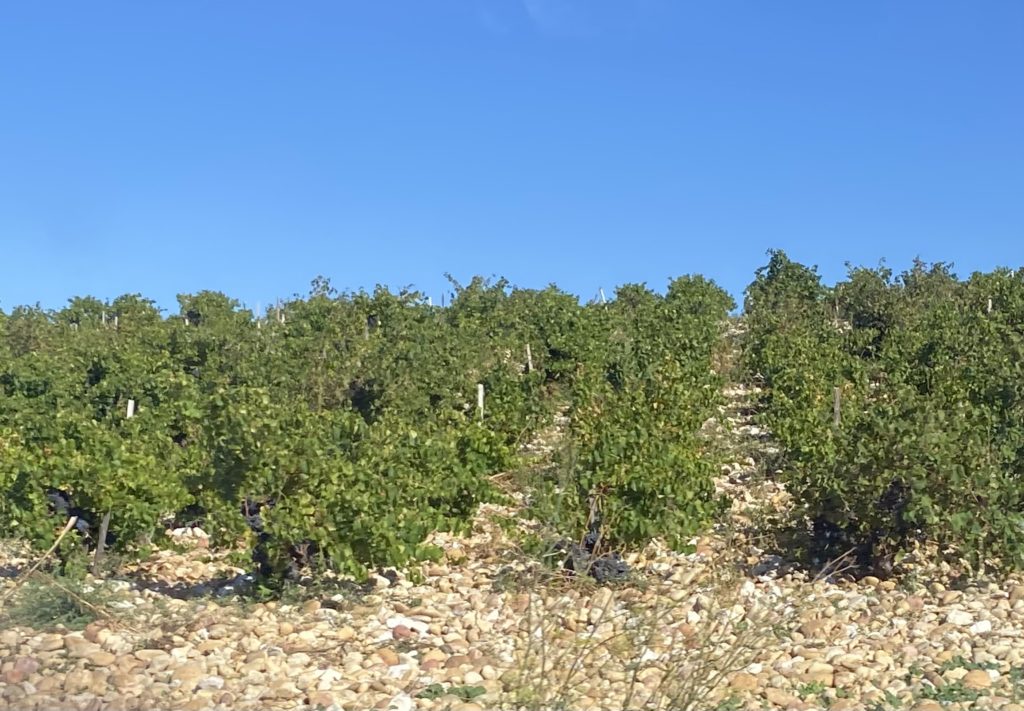
Typical surface terroir galets roulés in Chateauneuf-du-Pape (Photo P. Hunt, 2023)
Seven generations of the Famille Paul Coulon et Fils have produced excellent Chateauneuf-du-Pape for Domaine de Beaurenard beginning in 1929 but the original Domaine de Boisrenard name hails back to 1695 when known more as “Bois Renard” (“Foxwood”). Currently Frederic and Daniel Coulon and their sons Antonin and Victor Coulon manage the wine estate. I met Victor Coulon with his toddler son Leopold on my last visit. I was able to taste with archaeological friends four of their best wines on this most recent occasion and shipped half a case of the 2016 red home to California to be split with an accompanying friend for the second year in a row.
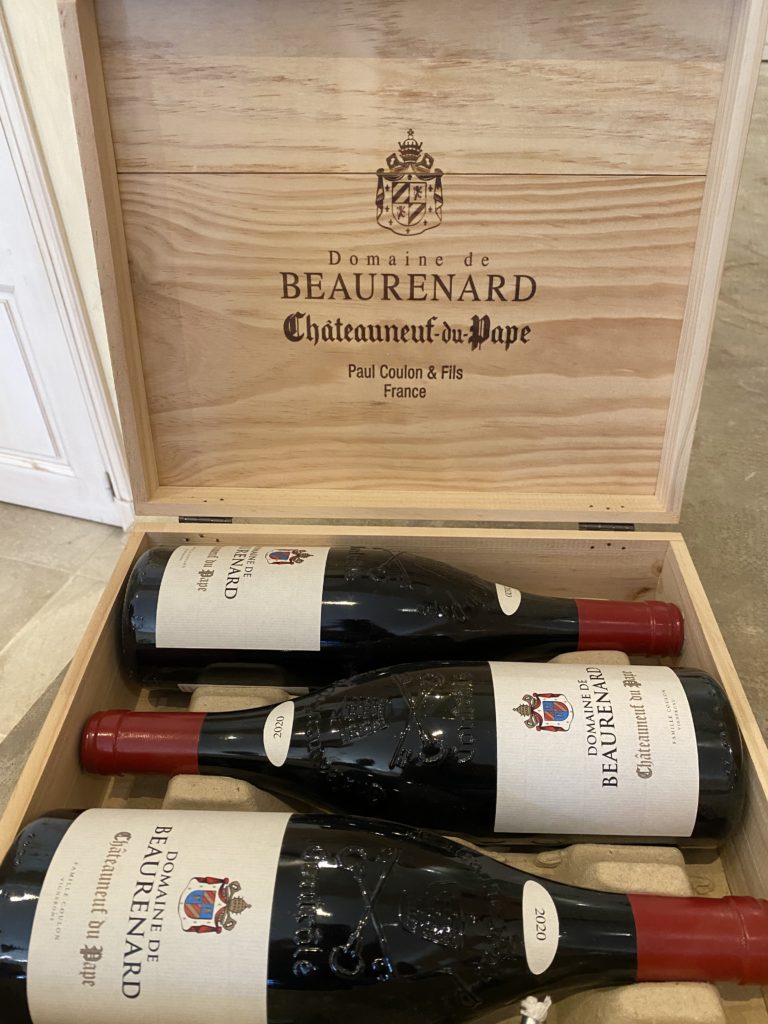
Wood shipping case of Beaurenard (Photo P. Hunt, 2023)
In both 2022 and 2023 we tasted two whites – including the succulent white Le Boisrenard 2021 from old vines reaching root depths of at least 30-40 feet – and two reds from several years including the above highly-rated 2016 and the equally-promising Le Boisrenard red 2020 of great depth which needs time to mature, again the latter from old vines with roots deep into the terrain as some of their vines are a century old.
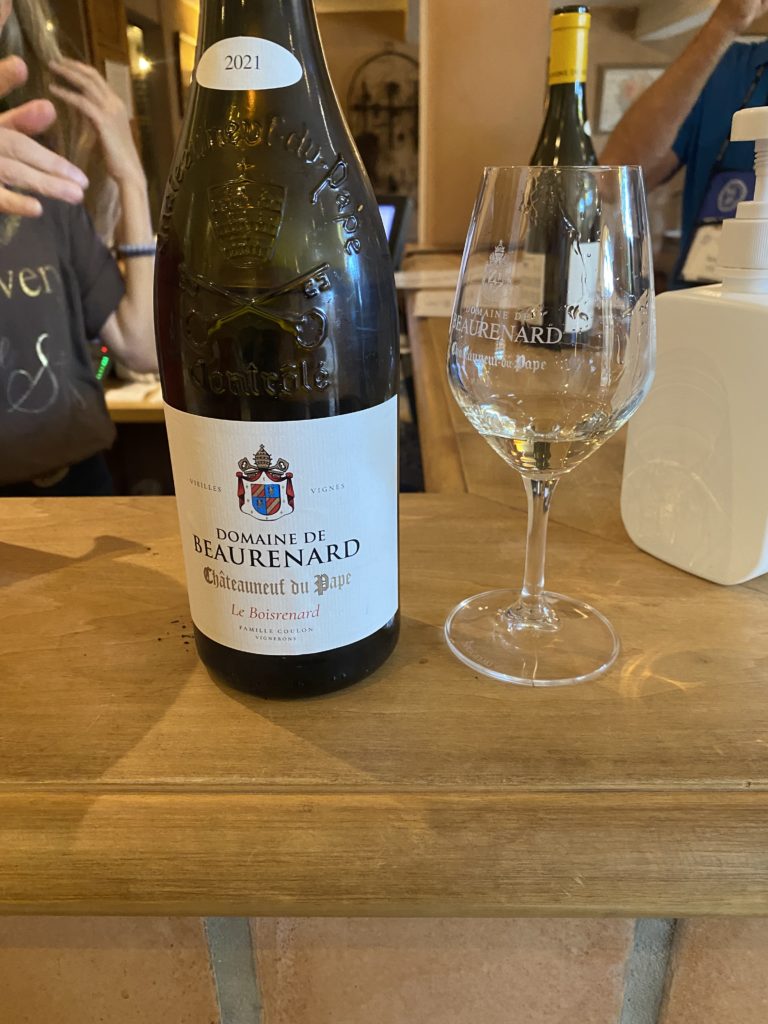
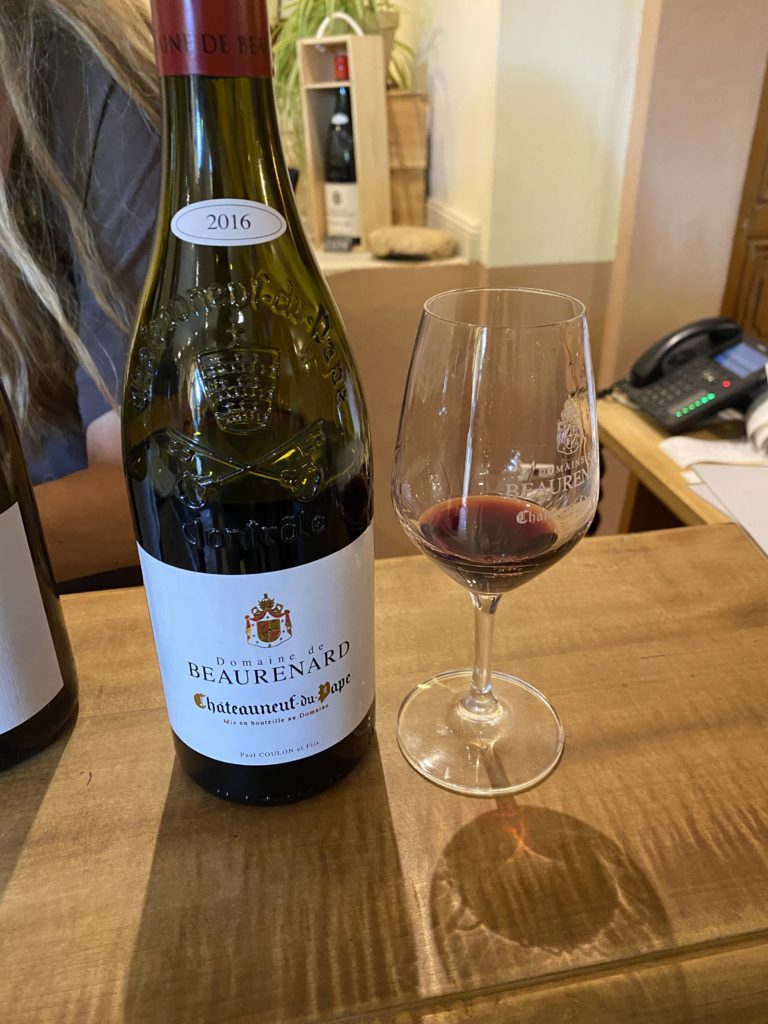
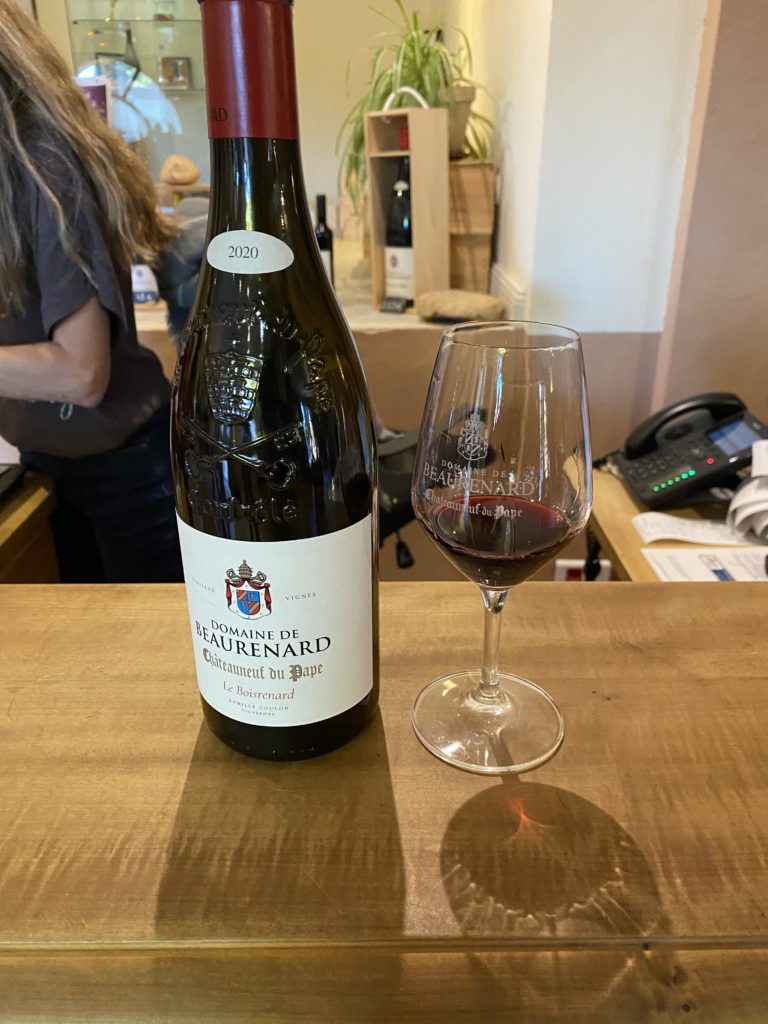
Although since 2009, up to 18 varietals can legally make up this blended wine by its AOC rules, Domaine de Beaurenard showcases 13 requisite varietals in its primary red Chateauneuf-du-Pape: red grapes Grenache, Syrah, Mourvèdre, Cinsault, Muscardin, Counois, Vaccarese, Terre Noir and white grapes Roussanne, Bourboulenc, Claudette, Picpoul and Picardan. Proportions in the 2016 red are 70% Grenache, 10% Syrah, 10% Mourvèdre, 4% Cinsault with the remaining 6% made of fractions of the other grapes decades old (averaging around 50 years). The premium Boisrenard cuvée is 60% old vine Grenache with the other varietals making up the rest.
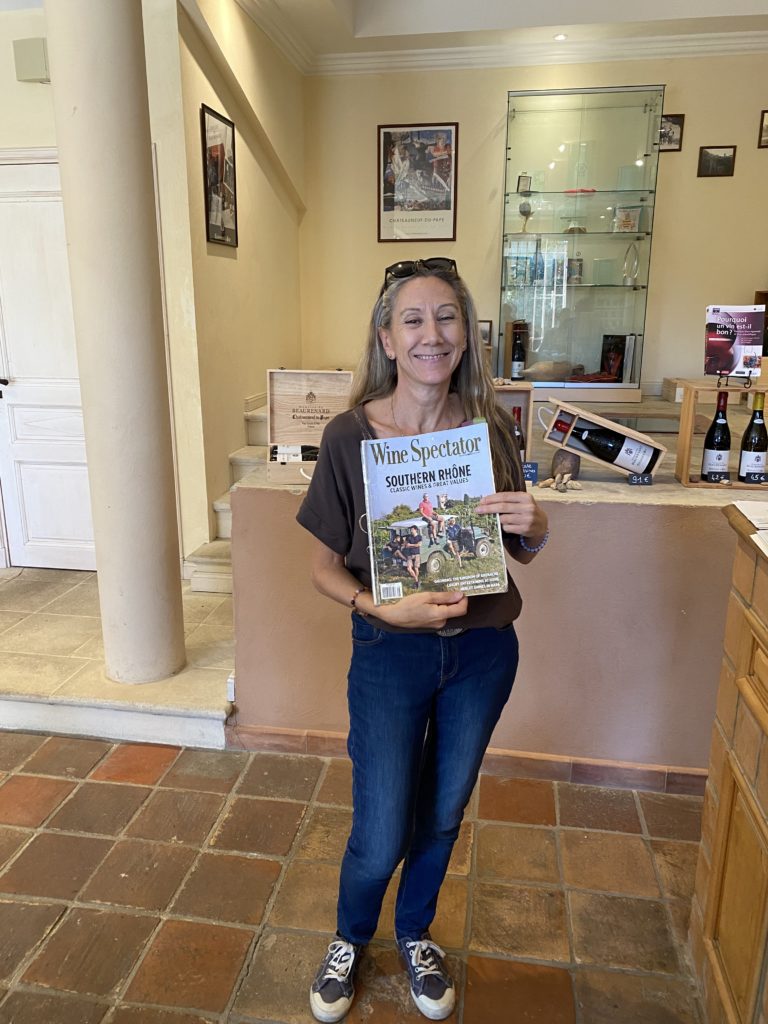
Sylvie of Domaine de Beaurenard with Wine Spectator November 2018 cover
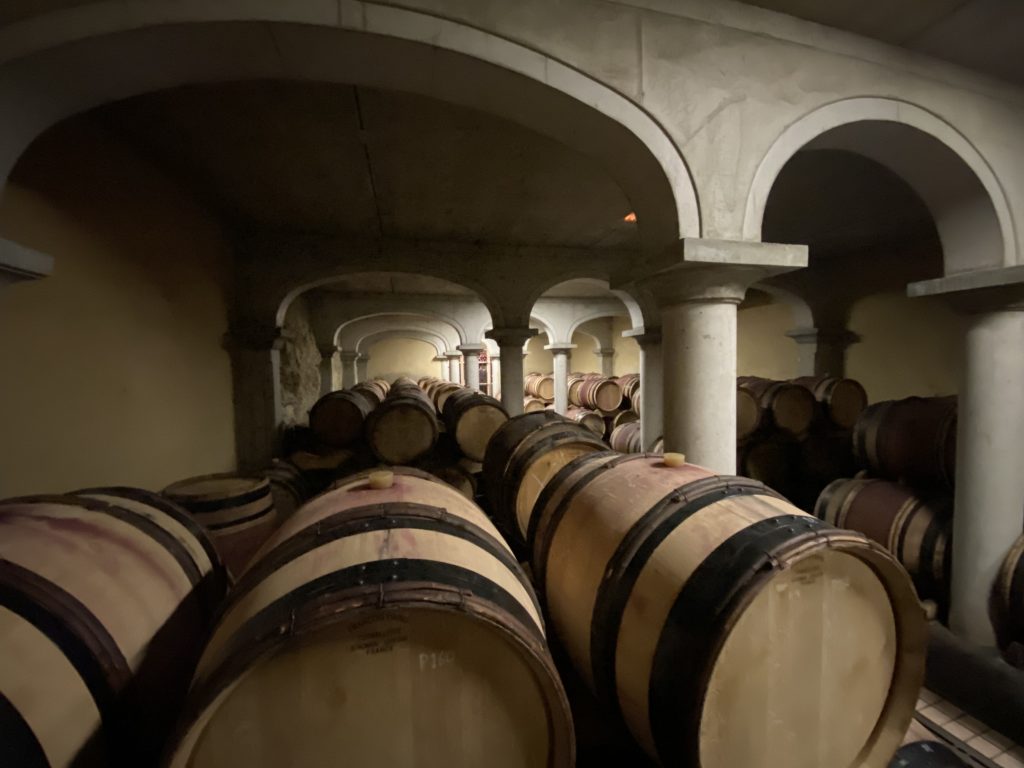
Domaine de Beauregard barrel room (Photo P. Hunt 2023)
Although our domaine friend Sylvie rattled off all these details, I am indebted to the sagacious wine connoisseur Rick McNees who regularly keeps up his valuable blog “Unwindwine” (https://unwindwine.blogspot.com/2020/12/domaine-de-beaurenard-cuvee-boisrenard.html) for some of the technical notes here. I look forward to returning to Domaine de Beaurenard next fall to remind myself how good is this domaine and why its collectible showcase wines deserve such accolades.

Victor Coulon with Leopold (Photo P. Hunt, 2023)